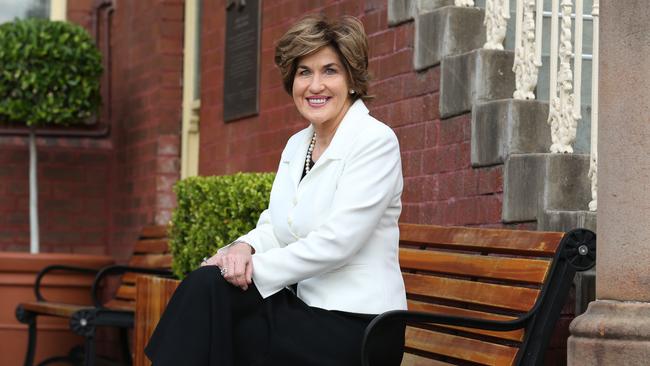House prices booming in the regions, says Suncorp chair
Suncorp chair Christine McLoughlin says house prices are booming in regional NSW but the flip-side is that small businesses can’t find workers

House prices in regional NSW are booming, but the flip-side is that small businesses outside the capital cities are struggling to find employees, Suncorp chair Christine McLoughlin has said.
In a panel discussion at an Australian Institute of Company Directors conference, Ms McLoughlin said the bancassurer’s expectations a year ago of an “absolutely dire” economic outcome from the pandemic had not eventuated.
“Go figure,” she said.
“And going to country NSW, the real estate prices there are extraordinary – a number of things are playing out there that we didn’t anticipate.
“The flip-side to that is you go to these country communities and you talk to the small businesses and they can’t get employees.
Market forces, she said, were coming back into play, but at different rates and in different parts of the country.
This was one of the reasons why the nation had to wean itself off blanket support programs like JobKeeper, which should be replaced by more targeted assistance for sectors that were under acute pressure.
Ms McLoughlin’s commentary came as CoreLogic data showed national house prices surged 2.1 per cent in February – the biggest change in the index in 17 years.
Sydney and Melbourne were among the strongest performing markets, recording a 2.5 per cent and 2.1 per cent lift in home values, as the nation’s two largest cities caught up from weaker performance through 2020.
Despite this, capital gains of 2.1 per cent in regional markets were larger than the two per cent increase in capital cities.
CoreLogic said regional areas generally recorded less of a decline in housing values through the worst of the COVID period in 2020, while also showing an earlier and stronger growth trend through the second half of last year.
National Australian Bank chairman Phil Chronican told the conference that the economy would return to its pre-COVID level before the end of the year, but the recovery would be patchy.
“There was a narrative this time last year that there was going to be a short, sharp hibernation and we would come back,” Mr Chronican said.
“What we’ve learnt is that we’re going to come back but in a different form, and there are some parts of the economy that are going to be much slower and might never get back to the levels they were at pre-COVID because the world will be different.
“That’s why it’s our role as company directors when we look at our strategies to be honest about what a post-COVID world is going to look like.
“If you are in businesses which depend on mass tourism it would be unwise to even think we’re going to be back in 2-3 years time to the levels of global mobility we got accustomed to.
“The thing that most businesses should be looking at is making sure they’re very clear about what is going to come back and what is not going to come back, and think now about how to reposition their businesses for that.”
In banking, Mr Chronican said, there had been a “massive” shift in the use of technology, with a significant reduction in cash usage and a further decline in the use of cheques, to a point where they were “virtually non-existent”.
NAB had experienced a one-off acceleration in its digital transition, and businesses would suffer problems if they were slow to respond to such challenges.
The NAB chair said the bank’s most confronting challenge during the pandemic was how to respond to its expectation that a significant number of customers would get into financial difficulty, only 18 months after the Hayne royal commission.
While the experience was “confronting”, the actual outcome was much better than expected.
“But we do have to be realistic,” Mr Chronican said.
“There are companies that are not going to survive, and borrowers who won’t be able to sustain their home loans or personal lending.
“These are difficult things and it’s the side of banking that no one wants to talk about but it’s an important part of what we do.
“I’m just pleased it’s going to be nowhere near the scale or magnitude of what we imagined it would be only 9-10 months ago.”
Peter Hay said his biggest challenge had been as chairman of Melbourne Airport – a “prosperous and vibrant” business where revenue had collapsed to zero in a downturn of “unknown duration”.
While Mr Hay endorsed the idea of a national cabinet, he said the repeated closure of state borders had shown that the level of co-operation in a real-life crisis was “pretty pathetic”.


